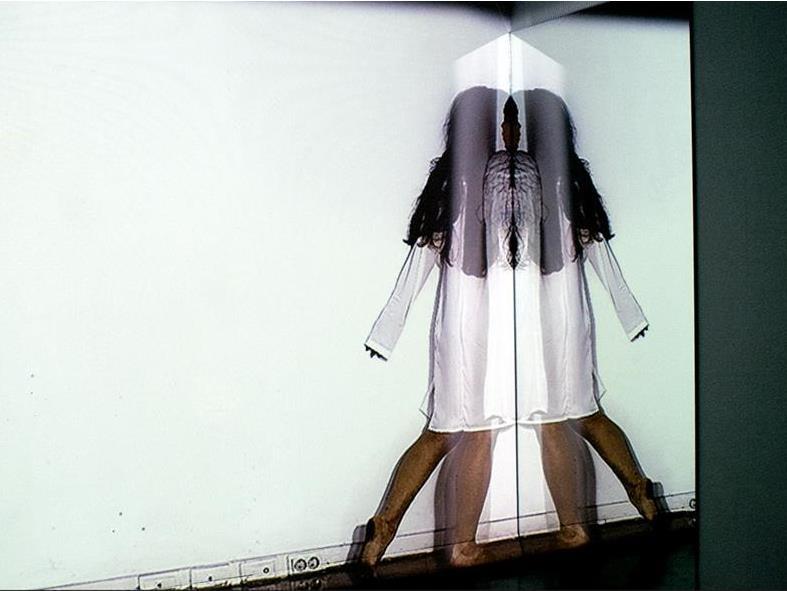Anna Tregloan’s work ‘Sufficiently Breathless’ at the Goyang Art Studio in Korea (Credit: Asialink)
A lot of the work that artists do involves considered amounts of time spent at a location trying to create a piece of art. The comfort of the location might for some, aid in the process of art-making. But what happens when an artist has to leave the familiarity of their workspace?
Anna Tregloan, an Australian multi-media artist who is currently at Goyang Art Studio at the National Museum of Modern and Contemporary Art (MMCA) in Seoul, as part of Asialinks’ 2014 Reciprocal Residency between Korea and NSW says, ‘As far as artistic practice goes, if you stay within the country, it’s quite a closed language that develops. It gets a bit cyclical; there are slaps on the backs of people who are fitting to the mode of doing things.
‘So in order to shake that up, artists should go somewhere where people don’t know anything about you. And so you have to introduce yourself to people all over, afresh and you have to talk about your work in a different way. It’s a breaker of habits.’
This re-contextualising of their work can only serve to benefit the artist as it provides a new canvas to work from, in some sense. Korean artist Mi-jin Kim, who is at Artspace in Sydney as part of the same residency, said, ‘I think the Art Residency gives the chance to discover a new part of life. All the time I spend just for myself, it’s a very unique moment as well, far from my own world.’
For the final two weeks of their residencies, both Kim and Tregloan will meet at the Bilpin International Ground for Creative Initiatives (BigCi) in the Blue Mountains and share their experiences. Developing a sustainable artistic practice will be one of the concepts Tregloan will explore while at BigCi.
‘In some ways I realised that in my personal life I’d always taken responsibility for the amount of electricity I used and waste I generated. But in my professional life, because of the way the industry worked, it was actually much harder to do that,’ she said.
Like all Asialink residencies, there is a generous grant for the Reciprocal Residencies allowing artists to give fruition to their artistic plans. Australian applicants receive $9000 to cover for airfare, living expenses and materials, while an equivalent of $3,000 in-kind support is offered by the Asian host organisation in the form of accommodation, hosting, studio space and exhibition/project costs.
In 2014, Singapore was added as a new host along with Japan, Korea and Taiwan. Artists Kyla McFarlane from Victoria and Angie Seah from Singapore traded places and McFarlane will be working at the Art Incubator in Singapore and Seah will be working and doing workshops at the Victorian College of the Arts in Melbourne.
And although artists find that they need to re-invent themselves, moving out of their familiar and comfortable zones is something they look forward to, primarily because of the valuable experience it brings in its wake.
‘The biggest thing is the connection to people, I suppose, because the Residency program provides introductions and an inside view of an institution,’ said Tregloan.
‘I think by being somewhere for a bit longer, you start to build deeper relationships with people, and really that’s what the arts are all about: it’s not about the location, it’s about the people.’
Applications for grants for the 2015 round of residencies have just opened. To apply or know more, click here.





